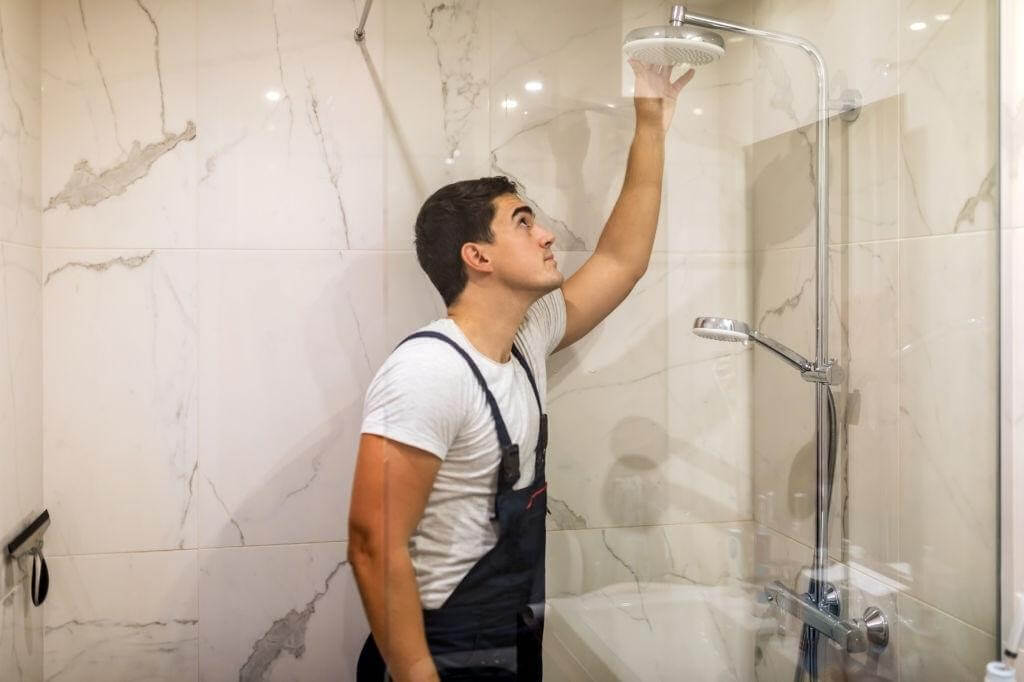The design and construction of a bathroom involve various crucial decisions, and one aspect that is often overlooked is the placement of the shower head. Determining the ideal shower head height is essential for ensuring comfort and functionality in your bathroom space. In this comprehensive guide, we will delve into the standards and considerations for setting the perfect shower head height during your bathroom build, exploring various facets to help you make informed decisions.
Standard Shower Head Height Guidelines:
Understanding the average height for installing a shower head is the first step towards creating a comfortable shower experience. The industry standard typically recommends placing the shower head around 80 inches (6 feet 8 inches) from the floor. This accommodation ensures that the majority of users can enjoy a satisfying and relaxing shower.
It’s important to note that these measurements are not fixed and may be adjusted based on individual preferences, accessibility needs, and the unique design of your bathroom space.
Consideration for Different Users:
A crucial consideration during the bathroom build is the diversity of users who will utilize the space. Taller or shorter individuals may require customized shower head heights for optimal comfort.
While the standard height provides a good starting point, adjustments based on the specific needs of the household members can significantly enhance the overall functionality of the bathroom.
Consider installing multiple shower heads at different heights or opting for adjustable fixtures to cater to the varied preferences of users.
Building Codes and Regulations:
Compliance with building codes and regulations is paramount during any construction project, including bathroom builds. Local authorities often have specific guidelines regarding shower head installation heights to ensure safety and accessibility. Familiarize yourself with these regulations to avoid any potential issues during inspections.
Adhering to building codes not only ensures legal compliance but also contributes to the creation of a safe and functional bathroom environment for all users.
Universal Design Principles:
Embracing universal design principles in your bathroom ensures accessibility for people of all ages and abilities. Installing a shower head at a height that accommodates individuals with mobility challenges can enhance the inclusivity of your bathroom space.
Consider incorporating features such as grab bars and non-slip flooring to further promote universal accessibility.
Universal design goes beyond shower head height; it encompasses the entire layout of the bathroom to create a space that is welcoming and usable for everyone.
Shower Head Types and Adjustability:
Different types of shower heads offer varying features, including height adjustability. Consider the preferences of the household members and select a shower head that caters to those needs.
Handheld shower heads, for example, provide flexibility and can be beneficial for users with limited mobility.
Additionally, installing a shower head with adjustable height settings allows for personalization, ensuring that each user can tailor their shower experience to their liking.
Personal Preferences and Comfort:
While adhering to standards and regulations is essential, personal comfort should not be overlooked. Take into account the preferences of the primary users and adjust the shower head height accordingly.
This ensures a personalized and enjoyable showering experience that aligns with the unique needs of your household.
Engage in open communication with the users to understand their preferences, ensuring that the final design of the bathroom caters to individual comfort levels.
Installation Tips for Optimal Performance:
Proper installation is key to the optimal performance of your shower head. Follow manufacturer guidelines and ensure that the shower head is securely mounted at the desired height. Pay attention to factors such as water pressure and angle to maximize efficiency.
If you’re unsure about the installation process or have specific design considerations, it’s advisable to consult with a professional plumber or contractor. They can provide valuable insights, ensuring that the installation not only meets safety standards but also functions seamlessly in the long run.
FAQs:
Q1: Can I install the shower head lower for a specific user?
Yes, you can customize the height to accommodate individual preferences, but ensure it still meets safety standards. Consider handheld or adjustable shower heads for greater flexibility.
Q2: What if my bathroom has a sloped ceiling?
Adjust the height based on the lowest point of the ceiling to maintain a consistent shower experience. Consider installing the shower head on an angled arm for better coverage.
Q3: Are there standard heights for handheld shower heads?
Handheld shower heads should be installed at a height that allows for easy reach and maneuverability. Consider mounting a slide bar to accommodate users of different heights.
Q4: Is it necessary to consult a professional for installation?
While it’s possible for DIY installation, consulting a professional ensures compliance with regulations and proper functionality. They can also provide valuable advice on optimizing water flow and pressure.
Conclusion:
Setting the ideal shower head height in your bathroom is a critical aspect of the overall design. By adhering to standards, considering different users, and incorporating universal design principles, you can create a functional and comfortable space that meets both aesthetic and practical requirements. Always prioritize safety, accessibility, and personal preferences to achieve the perfect shower experience in your newly constructed bathroom. Whether you opt for a standard height or customize based on individual needs, a well-thought-out approach ensures a harmonious blend of functionality and aesthetics in your bathroom design.

A group of home improvement enthusiasts and bathroom design experts, combines in-depth knowledge and a shared passion to deliver engaging, informative content that guides readers through the world of bathroom innovation and style.

Leave a Reply